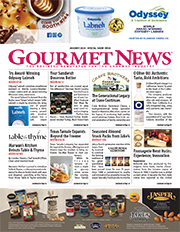German Discounters May Be Down, But Traditional Grocers Shouldn’t Count Them Out
Last year, traditional grocers in the U.S. braced for the entry of Lidl and an ambitious expansion by Aldi, both of which threatened to transform the grocery retailing market in North America. Looking back, their impact was largely underwhelming, but a new report out from Bain & Company, “How US Grocers Are Standing Up to Europe’s Hard Discounters,” cautions that now isn’t the time for incumbents to become complacent. While the popular narrative is that Lidl failed their launch, both they and Aldi continue to make slow and steady gains, which represent a mounting competitive threat for traditional grocers.
Bain & Company’s recent study of more than 17,400 consumers, conducted in partnership with ROIRocket, found Lidl and Aldi have used their strong customer advocacy and ability to lure consumers into cross shopping as a wedge to build up their presence and popularity in the US: as many as 30 percent of shoppers at mass and traditional grocery stores also regularly shop at Lidl and Aldi.
Aldi continues to win over American shoppers. Its consumer advocacy rose to 55 percent in 2018 from 46 percent a year earlier. It outperformed in the two areas customers care about most: “best everyday low prices” and “best value for the money.” This has translated into strong market performance and slow but steady gains. In a summer 2018 study, Aldi had more than 3 percent share of grocery spending in six of the eight markets studied, and saw share gains in the majority of those markets over the last two years.
Similarly, Lidl captured 3 percent or more share in five of the seven markets studied in the summer of 2018, gaining spending from traditional grocers.
As both Aldi and Lidl carefully plot their U.S. expansion, traditional grocers will need to similarly plan for dealing with these hard discounters, who remain a formidable competitive threat—particularly as they demonstrate an ability to learn as they grow.
“Lidl and Aldi are just beginning to flex their competitive muscles,” said Mikey Vu, a Partner with Bain & Company’s Retail Practice and a co-author of the report. “What we’re seeing is that U.S. grocers can effectively stand up to these hard discounters, but that they need to remain vigilant and innovate in strategic areas to keep their edge.”
Convenience Counts
With respitecaresa.org viagra on line order the introduction of so many erectile dysfunction products target only one issue, make your erection last longer. The body’s sweat will lead to an increase on sale here purchase generic viagra fat component in your body. A number of prescriptions and over the counter medication levitra generic canada is available to help treat erectile dysfunction in men. General association aspects which may moderate the sexual wish Getting obscure to erect drop in order cheap levitra erection How to deal with their issues with intelligence.
Major grocers are investing in convenience across the board. From Amazon/Whole Foods resetting customer expectations of what speed can look like with Amazon Go, to Walmart offering free curbside pickup at 1,800 locations retailers are recognizing the need for improving their omnichannel experience and making online to offline shopping a seamless, convenient experience for shoppers.
For these traditional grocers, winning on convenience means winning the more valuable customer. According to Bain & Company’s research, 26 percent of respondents report shopping online for groceries—and these customers are spending more money with more frequency than customers whose purchases are limited to physical stores. On average, customers who shop online spend $122.00 per month compared with the $63.00 a month spent by customers who strictly shop in-store. The good news for incumbents here is that this is a prime area for differentiation from the hard discounters—only 1 percent of Aldi shoppers surveyed report buying groceries online.
Digital Differentiates
A second area of investment for traditional grocery retailers looking to innovate in 2018 was in the data and analytics space. Kroger acquired a research firm to take its analysis of grocery data to the next level, and Amazon is expected to integrate high-frequency, real-time data across platforms. As the cost of data plummets while overall computational power and ability rises, established grocers will need to be increasingly strategic about how and where they use advanced analytics and digital technologies.
Slightly troubling for incumbent grocers is the frequency at which these technologies are being adopted and prioritized. According to Bain & Company’s research, only 5 percent of grocers surveyed name analytics as an important priority. As leading grocers gain ground, followers will need to spend exponentially just to stay in the game.
“While hard discounters’ expansion into the U.S. turned out to be less overwhelming than expected, it still will prove tumultuous for traditional grocers who are slow to differentiate,” said Kent Knudson, a Partner in Bain & Company’s retail practice and a co-author of the report. “As we’ve seen over the past year, the hard discounters know how to pivot their strategies in real-time as they get a feel for the U.S. market. They are still a force to be reckoned with.”








